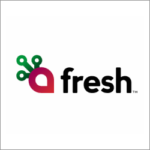Top Kitchen Display Systems (KDS) in 2024
A kitchen display system keeps your kitchen organized and running efficiently.
Top Kitchen Display Systems (KDS) in 2024
A kitchen display system keeps your kitchen organized and running efficiently.
Authentic reviews
Real restaurateurs
Software help
Kitchen Display Systems, also known as KDS, are digital systems that restaurants use to display orders to kitchen staff.
When an order is placed by waitstaff, it’s sent to the KDS and immediately displayed for staff on the KDS screen.
While it might just seem like a straightforward replacement for paper tickets, the benefits of a KDS extend beyond that. Choosing the right KDS for your restaurant will do wonders for improving communication between your staff and streamlining the order preparation process.
Let’s dive right into our ranking of the best KDS systems for restaurants.
The 5 Best Kitchen Display Systems (KDS) for 2024
While the market is flooded with numerous KDS options, selecting the right one can be a game-changer for your kitchen.
Here are the top five Kitchen Display Systems for restaurants in 2024:
Best Overall
Toast KDS

Known for its user-friendly interface and all-in-one integration capabilities, Toast KDS is the preferred choice for restaurants seeking a unified system.
Best for Small Restaurants
Square KDS

This system stands out for its cost effectiveness and ease of use. Square KDS has fewer features than competitors, but is a good choice for smaller restaurants and cafes that don’t need all the bells and whistles.
Best Standalone KDS
Fresh KDS

Offers a low-cost standalone KDS that integrates with many POS systems. Fresh also has a free trial which can be helpful for restaurants just dipping their toes into KDS.
Best Offline Mode
TouchBistro KDS

This platform stands out for its strong offline mode. If wifi goes down, waitstaff can continue sending orders to the KDS.
Robust Feature Set
Lightspeed KDS

Lightspeed is known for its scalability and versatility, catering to restaurants of all sizes. Its KDS is no exception, offering a robust set of features including strong analytics and reporting tools.
All KDS Rankings

★
(0 reviews)

★
(0 reviews)

★
(0 reviews)

★
(0 reviews)

★
(0 reviews)

★
(0 reviews)

★
(0 reviews)

★
(0 reviews)

★
(0 reviews)

★
(0 reviews)

★
(0 reviews)
What Is a Kitchen Display System (KDS)?
A Kitchen Display System is a digital tool that replaces traditional paper ticket systems in commercial kitchens.
It’s essentially a digital screen setup that displays food orders to kitchen staff in real-time.
Most KDS’s integrate with a restaurant’s point-of-sale (POS) system so that orders can be communicated instantly from the waitstaff to the kitchen.
How Does a KDS Work?
Kitchen Display Systems enable instant communication between waitstaff and kitchen staff.
Here’s a step-by-step breakdown of how a KDS works to smooth kitchen operations:
Step 1: Server Places Order
The journey begins when a server places an order through the restaurant’s point-of-sale (POS) system.
This is done using various devices such as dedicated POS terminals, mobile POS devices, or other devices like tablets.
Many POS and KDS integrations allow the server to enter specific details about the order, such as special instructions, customer preferences, or allergy notifications. These instructions are automatically relayed to kitchen staff.
Step 2: Order Routed to the Appropriate Kitchen Station
Once the order is entered into the POS, it’s instantaneously sent to the KDS.
Here, the magic of technology ensures that the order is automatically routed to the specific kitchen station responsible for preparing that part of the order. For instance, a salad goes to the cold station, a steak to the grill station, and a dessert to the pastry station.
This targeted routing lets each section of the kitchen focus on their specific tasks without being overwhelmed by unrelated orders.
Step 3: Dishes Are Prioritized
One of the most critical features of a KDS is its ability to prioritize orders based on various factors such as order time and dish preparation time.
This means that kitchen staff know which dishes to prepare first so that everything in the order is ready to be served together, at the perfect time.
For example, if a table orders a steak (which takes longer to cook) and a salad (which can be prepared quickly), certain KDS’s automatically adjust the preparation sequence. The steak order goes to the grill station immediately, while the salad order is sent to the station later so that it’s prepared closer to when the steak is done.
Step 4: Kitchen Staff Accesses Details
Next, kitchen staff access the details of each order on their designated display screens. They can see everything they need to know about each order, including dish ingredients, cooking instructions, and any special requests from guests.
With this information digitally accessible, kitchen staff have a clear understanding of what needs to be done without needing back-and-forth discussions with servers.
Step 5: Order Completion
Once orders are finished, kitchen staff mark the orders as complete directly on the KDS, which can then notify servers that the dish is ready to be picked up.
Step 6: Serving
After a dish is marked as completed, serving staff is alerted via the KDS or a related system that the order’s ready for pickup.
Benefits of Kitchen Display Systems
Adding Kitchen Display Systems into a restaurant’s operations can have a big impact on enhancing the dining experience for guests.
Here’s a closer look at the benefits that KDS brings to the table:
Gains In Efficiency
KDS technology brings a new level of efficiency to how kitchen staff prepare, sequence and serve dishes to customers.
Here’s a breakdown of efficiencies gained from using a KDS:
- Enhanced Coordination Between Kitchen Stations: KDS facilitates better coordination between different kitchen stations (e.g., grill, fryer, salad, dessert) by providing real-time updates on order status across the stations. This makes sure that all stations complete orders at roughly the same time.
- Optimized Dish Preparation Times: Advanced KDS systems allow for delayed routing and can intelligently sequence dishes based on their preparation times. This way, recipes requiring longer cook times are started earlier, while quicker dishes are started later to complete the order.
- Improved Meal Pacing: The KDS allows servers to input course sequencing instructions so that kitchen staff prepare dishes in the correct order. For example, appetizers can be prioritized, followed by main courses, and with desserts prepared last.
- Reduced Need for Holding Dishes: One of the challenges in a busy kitchen is managing dishes that are ready before others. Without proper coordination, these dishes might need to be kept under heat lamps or in warming drawers. KDS helps by aligning the completion times of all dishes.
Improves Communication Between FOH & BOH
A KDS serves as a communication bridge between the front-of-house and back-of-house staff, eliminating the need for for physical tickets and reducing the chances of miscommunication.
When front-of-house staff enter orders into the system, kitchen staff receive them instantly and can begin preparation right away. This guarantees that every order is sent quickly and accurately, and reduces the chance that kitchen staff will miss an order.
Fewer Errors
Without physical tickets, there’s less of a chance that tickets get lost and kitchen staff miss orders.
Plus, the clear display of order details, such as special instructions and modifications, lowers the chance of mistakes during food preparation.
Reduces Waste
The accuracy gained from kitchen display systems helps reduce waste.
By ensuring orders are prepared correctly the first time, restaurants minimize having to remake dishes due to errors, which can lead to savings in food costs over time.
Provides Real-Time Data Insights
Many KDS platforms offer analytics and reporting capabilities.
For example, KDS can provide insights on average order preparation time which tells you how long it takes to prepare orders and helps identify bottlenecks in your kitchen operations.
More advanced systems can break down order preparation time by kitchen station (e.g. grill, steamer, dessert). This lets you pinpoint which stations are causing delays so you can take steps to speed things up.
Better Customer Service
Ultimately, the bottom line of using a KDS is that it leads to improved customer service.
Quicker, more accurate service means shorter wait times and a higher chance of getting orders right the first time. This results in happier customers. And as every restaurant knows, happy customers are the key to growing your business.
How to Choose the Right Kitchen Display System (KDS)
Selecting the best KDS for your restaurant involves considering several key factors:
1. Evaluate Integrations
The first step to choosing the right KDS for your business is determining whether it integrates with your existing systems.
- POS Compatibility: The most important integration to evaluate is with your current point-of-sale system. A KDS absolutely must integrate with your current POS to ensure smooth communication between FOH and BOH.
- Online Ordering Compatibility: Consider if the KDS integrates with your current online ordering technology. This way, online orders are seamlessly added directly to your KDS so that kitchen staff can get started right away.
- Software Ecosystem: It’s also helpful if the KDS integrates with the rest of your software ecosystem, such as inventory management, analytics, and recipe costing software. Seamless integration across all of these platforms will create more efficiencies for your business.
2. Assess Usability
- Ease of Use: The goal of a KDS is to make life easier for your kitchen staff. So it’s important to choose one with an intuitive interface that your staff will enjoy using. Consider having a demo, or trial run if possible, to see how easily your staff can adapt to it.
- Training and Support: Evaluate training and support services offered by the KDS provider. Strong training and support can come in handy if you run into any issues and need help.
3. Decide On Features and Cost
- Essential Features: Identify the must-have features for your restaurant, such as real-time order updates, customizable views and filtering, order prioritization, and analytics. Make sure the KDS meets your core needs.
- Customization and Scalability: Consider whether the KDS can be customized to fit your kitchen’s unique workflow and if it can scale with your business growth. Look for systems that offer flexibility and the capacity to grow with you.
- Cost-Effectiveness: Analyze the cost relative to the benefits. This includes not just the initial investment but also recurring fees.